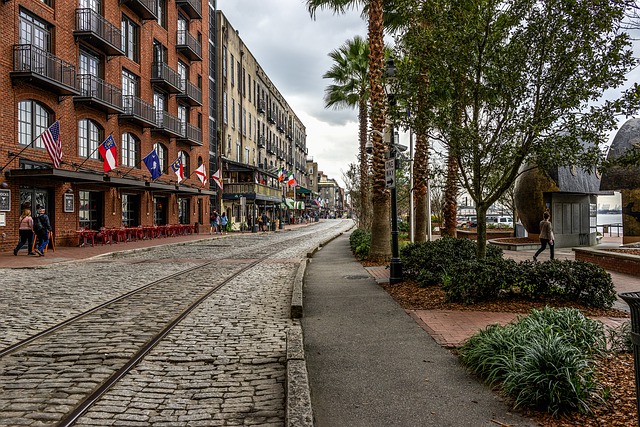By Tim Lambert
Early Savannah
The city of Savannah was founded in 1733 by a group of colonists led by a man named James Oglethorpe (1696-1785). The new town was laid out in a grid pattern, with broad streets and several public squares. Herb House was built in 1734. The Pirate’s House opened as a tavern in 1753.
Savannah grew rapidly but in December 1778 it was captured by the British. In September 1779 French and American troops lay siege to the town. But they failed to capture it and the siege was lifted in October 1779. The British held Savannah until 11 July 1782.
After the war Savannah prospered but it was devastated by a fire in 1796. The fire began on 26 November 1796 and raged until the following day. Many of the houses and commercial buildings in the town were destroyed.
Savannah was gradually rebuilt but it suffered another severe fire in 1820. The fire began on 11 January 1820 and again it raged until the following day, causing great damage. Savannah also suffered an epidemic of yellow fever in 1820. There was another epidemic of yellow fever in 1854.
Despite these disasters, Savannah grew rapidly in the 19th century. In 1840 its population was 11,000. By 1860 it had risen to 28,000. Meanwhile, Bonaventure Cemetery was created in 1846. Forsyth Park was created in 1851. Forsyth Fountain was added in 1858. The present First Black Baptist Church building was built in 1859.
During the Civil War, on 21 December 1864 Unionist troops captured Savannah. Another epidemic of yellow fever struck Savannah in 1876. The same year, 1876 the Cathedral of St John The Baptist was dedicated. Savannah State University was founded in 1890.
In the late 19th century Savannah continued to grow. By 1900 it had a population of over 52,000.
In the 19th century, the main export from Savannah was cotton. A cotton exchange was established in Savannah in 1872. It moved to a purpose-built building in 1886. In the late 19th century and early 20th century, naval stores were also an important export.
Modern Savannah
The population of Savannah continued to grow rapidly in the early 20th century and by 1950 it was over 119,000. However, in 1915, the boll weevil reached Georgia and it destroyed the cotton industry.
On a happier note lyricist Johnny Mercer was born in Savannah in 1909.
Meanwhile, Savannah City Hall opened in 1906. In the mid-1950s some historic buildings in Savannah were in danger of being demolished. In 1955 a group of women campaigned to preserve Davenport House, which was built c. 1820. They formed the Historic Savannah Foundation, to preserve old buildings.
Today tourism is an important industry in Savannah. Ships of the Sea Maritime Museum was founded in 1966. Ralph Mark Gilbert Civil Rights Museum opened in 1996. The American Prohibition Museum opened in 2017. The African-American Monument was erected in 2002. Jepson Center For The Arts opened in 2006. Savannah is also, of course, a regional shopping center. Oglethorpe Mall opened in 1969 and Savannah Mall opened in 1990.

In 2024 the population of Savannah was 147,000.